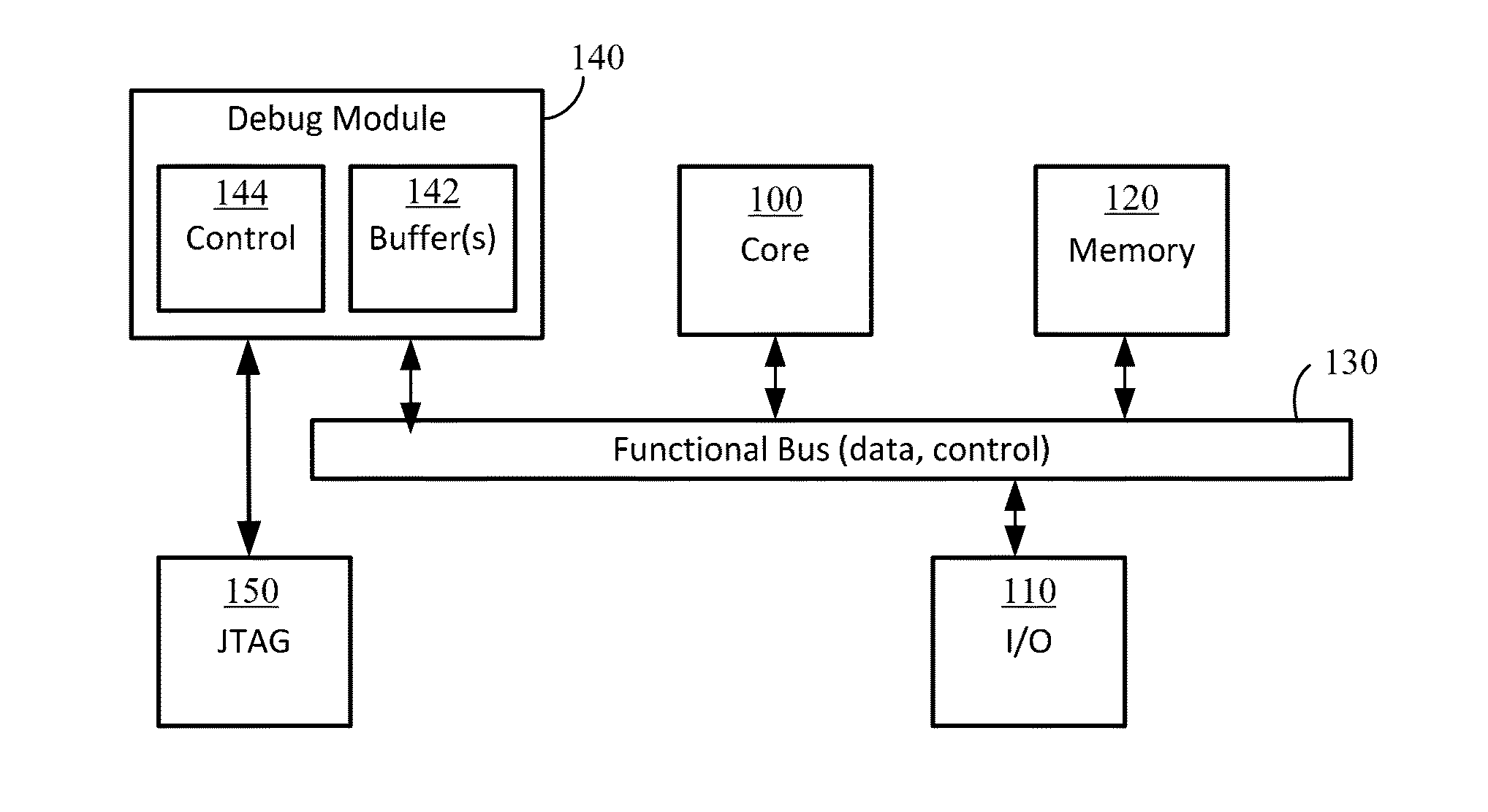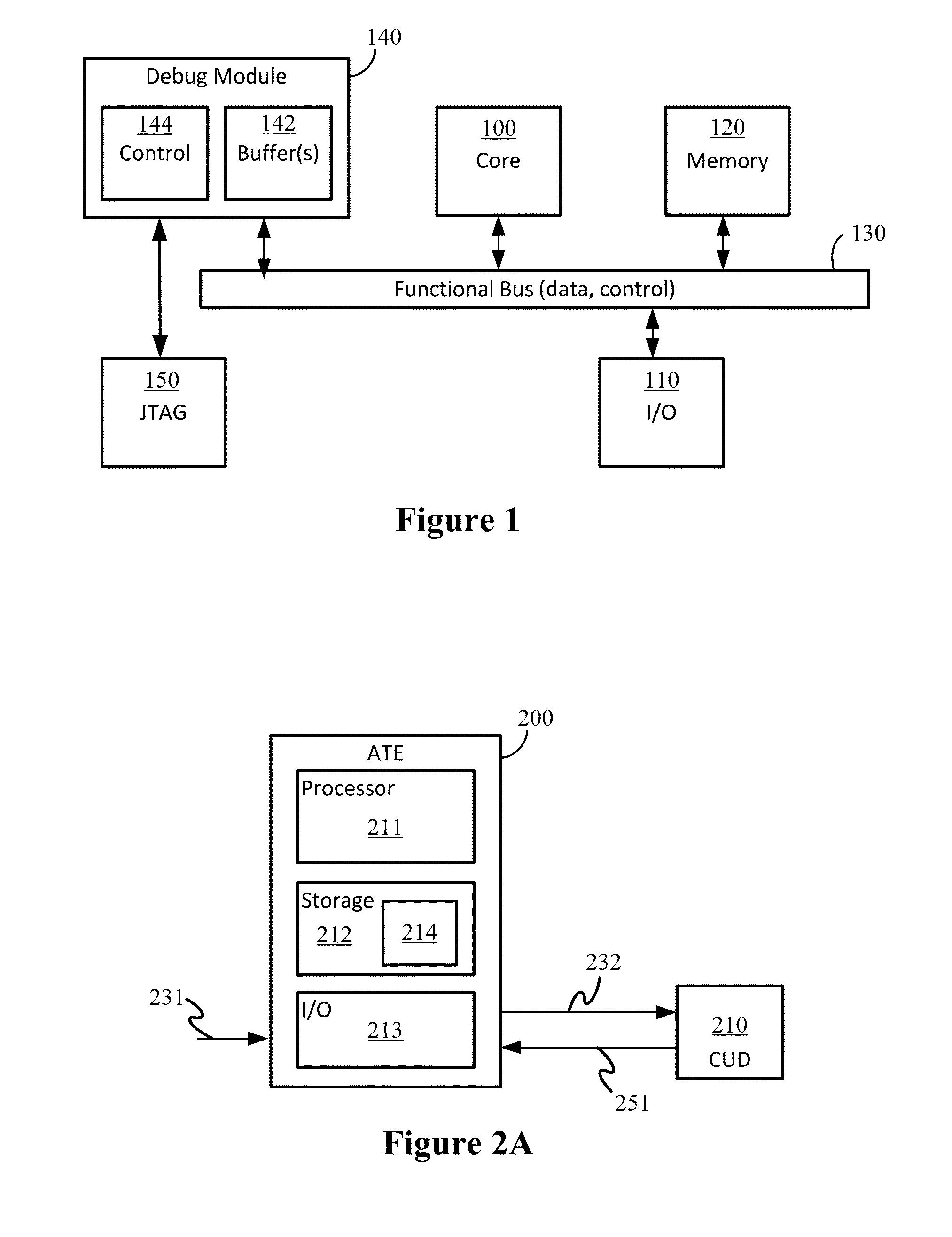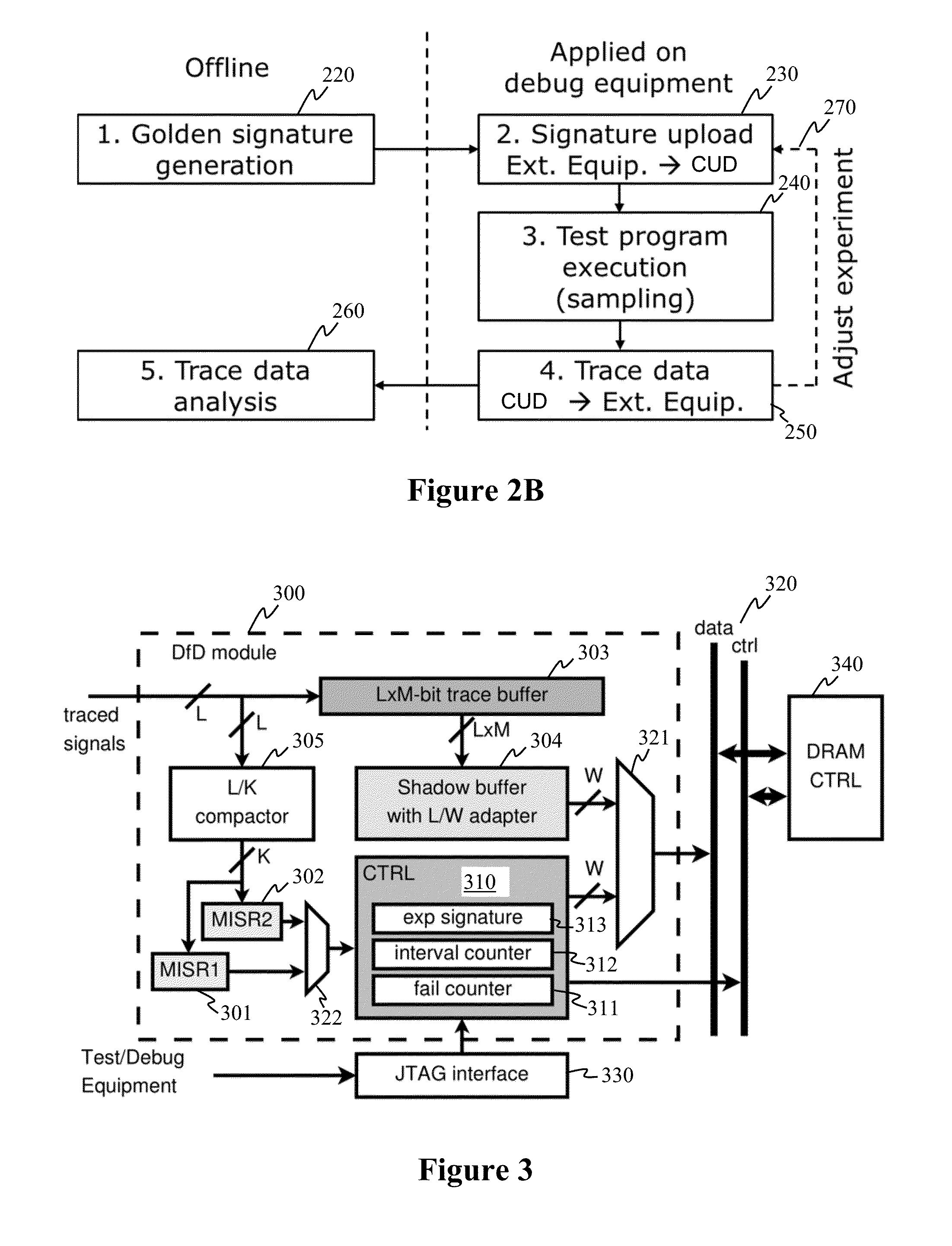Signal tracing using on-chip memory for in-system post-fabrication debug
a technology of on-chip memory and in-system debugging, applied in the direction of error detection/correction, instruments, measurement devices, etc., can solve the problem that the initial run of a fabrication process for a particular design is rarely bug-fr
- Summary
- Abstract
- Description
- Claims
- Application Information
AI Technical Summary
Benefits of technology
Problems solved by technology
Method used
Image
Examples
example dfd implementation
and Simulation
[0083]A Verilog RTL model of the architecture illustrated in FIG. 3 was created and synthesized using a 45 nm CMOS library. For the case L=K=32, S=32, and M=128, the synthesized circuit contained 8293 sequential and 8725 combinational gates. The standard-cell area of the design was 0.061 mm2, which is negligible for realistic chips. For instance, on a 25 mm2 die, the DfD circuitry would only occupy 0.24% of the die area.
[0084]In the first experiment, the functionality of the design was verified through simulation by using randomly generated data as an input stream. First, the expected signatures were calculated by applying the input stream to the MISR and recording the MISR's value every M cycles. In the second run, the full circuitry was simulated, where the DRAM was modeled as a Verilog module and initialized with the pre-calculated signatures. As expected, all intervals passed the comparison and no trace data was stored into the DRAM. In the third run, errors were i...
PUM
 Login to View More
Login to View More Abstract
Description
Claims
Application Information
 Login to View More
Login to View More - R&D
- Intellectual Property
- Life Sciences
- Materials
- Tech Scout
- Unparalleled Data Quality
- Higher Quality Content
- 60% Fewer Hallucinations
Browse by: Latest US Patents, China's latest patents, Technical Efficacy Thesaurus, Application Domain, Technology Topic, Popular Technical Reports.
© 2025 PatSnap. All rights reserved.Legal|Privacy policy|Modern Slavery Act Transparency Statement|Sitemap|About US| Contact US: help@patsnap.com



